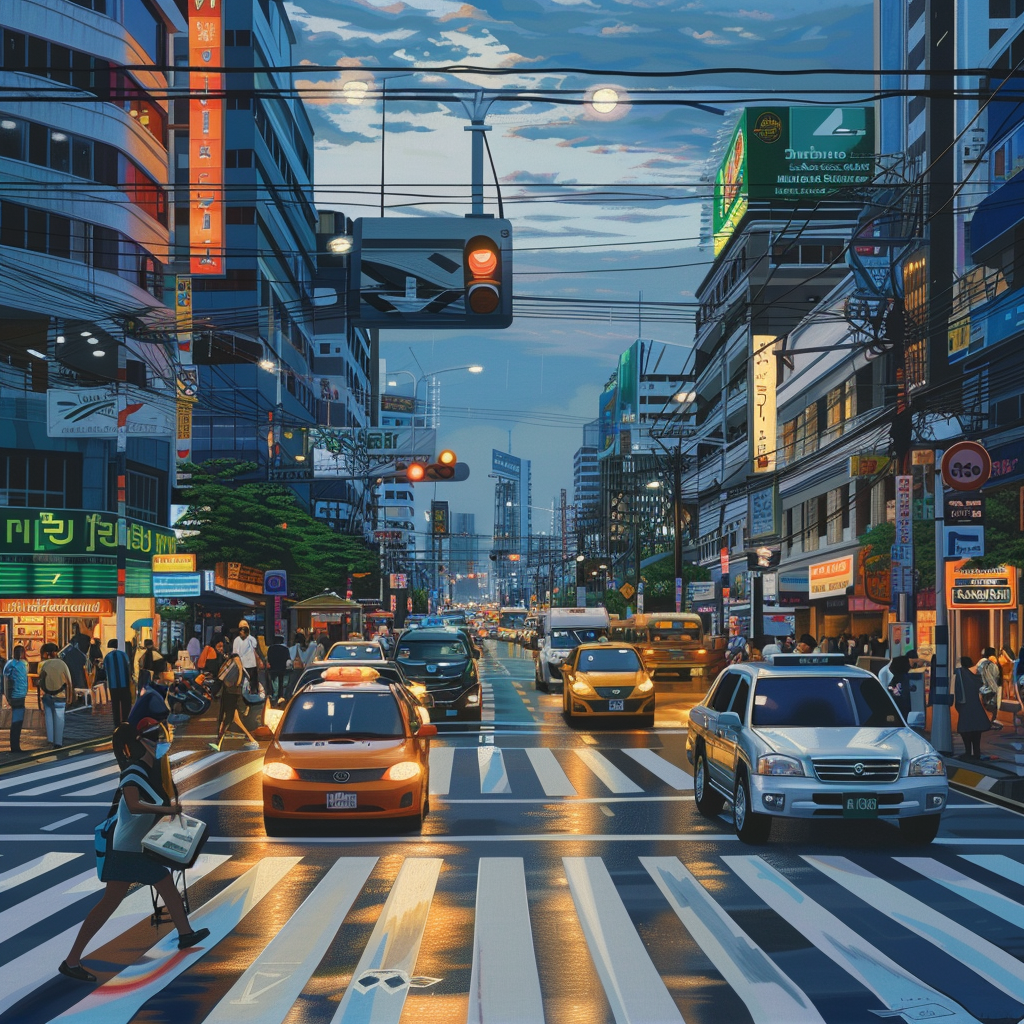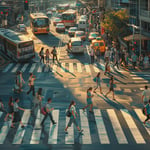In the bustling metropolis of Bangkok, a growing chorus of concern echoes through the city’s vibrant streets as the pressing issue of road safety at pedestrian crossings takes center stage. Recent findings underscore the stark reality that most road accidents occur perilously close to schools and hospitals, underscoring an urgent call for action. Driving this initiative is Chamaipan Santikarn, the diligent manager of the Social Mobilisation for Motorcycle Safety Project at ThaiHealth. Her voice of advocacy grows even louder following a heart-wrenching incident where a 68-year-old South Korean tourist fell victim to a reckless motorcycle at a crossing outside the renowned Kidney Institute Hospital on Phaya Thai Road, nestled in the Ratchathewi district.
This very crossing, a place meant for safe passage, haunts the memory with the shadow of a fatal accident two years prior, where an ophthalmologist met with tragic fate. Such repetitive incidents at the same location—despite the foreboding presence of visible stop lights—serve as a chilling testament to Thailand’s persistent struggles with road accident prevention. These occurrences, vivid reminders of the looming dangers that pedestrians face daily, ignite Chamaipan’s urgent appeal for effective remedial action by government agencies.
In a quest for solutions, Chamaipan draws attention to successful measures embraced by other nations. Around the globe, rumble strips are strategically placed before pedestrian crossings, their vibrating message serving to slow down vehicles, thereby averting many potential calamities. She passionately highlights China’s ELLUMIN Intelligent Pedestrian System, a marvel of modern engineering that heightens crossing safety with its illuminated signs, smart sensors, and auditory alerts that seem to whisper reassurances to waiting pedestrians.
Meanwhile, in South Korea, a nation renowned for its innovative technological strides, pedestrian safety is championed through a smart crosswalk system. This ingenious approach incorporates ground-level crossing lights—perfect for those whose attention is often seduced by mobile phones or when larger vehicles obscure traditional light signals. The system goes a step further with audio cues and glowing crossing signs that guide the way like beacons in the night, complementing a network of cameras and sensors primed to capture the identity of rule violators.
Recent data captured by the unblinking eyes of CCTV at Bangkok’s pedestrian crossings have identified a significant number of high-risk zones, laying bare their vulnerability. Most perilously located in front of revered educational institutions and critical healthcare centers, these areas include prominent sites like Bangkok Intercare School, Yothinburana School, the beleaguered Kidsey Institute Hospital, Buengthonglang High School, Rattanakosinsompoch Bangkhunthian School, and Big C on Itsaraphap Road.
In an interrelated vein of news, Bangkok has witnessed the implementation of a revised speed limit, hanging like an unfulfilled promise of hope over the city for more than a month. Yet, the enforcement of this speed limit remains a challenge as the eyes of traffic police await the vigilant power of Artificial Intelligence (AI) security cameras promised by the Bangkok Metropolitan Administration (BMA). These digital sentinels, once installed, are to play a pivotal role in actualizing the newly articulated speed restrictions, curtailing speeds to 60 kilometers per hour (kph) across most urban roads, with the iconic Grand Palace area granting an exception with a cautious limit of 50 kph.
As the clock ticks forward, Bangkok’s tale unfolds with an undeniable urgency—a narrative woven with both the metaphorical ribbons of cautionary tales and tangible threads of hope. The city’s quest for pedestrian safety, led by indefatigable advocates like Chamaipan Santikarn, signifies more than just the drive to implement effective safety measures. It tells a story of a populous keen on evolving, adapting, and safeguarding the lives of those walking along its pavements—a narrative still being written, but with aspirations and a blueprint for a safer tomorrow.


















It’s shocking that in a city as modern as Bangkok, pedestrian safety is still such a massive issue. What good are traffic lights if people don’t obey them?
Absolutely, Joe! It’s clear enforcement is lacking. Without proper penalties, why would anyone care?
Exactly, Nina. I think AI cameras might help, but there must be a commitment from authorities to actually act on what the cameras capture.
Traffic lights work elsewhere. The problem is cultural. There’s no excuse for bad driving!
Until people start respecting the law and using common sense, measures like rumble strips are just band-aids.
That intelligent pedestrian system in China sounds like a dream! But would Thai drivers even pay attention?
Lucy, I’d hope so, especially if there’s a fine waiting at the end for those that don’t!
True, Matt. I wonder how long it might take to implement something like that here, though.
The AI security cameras are a good idea, but what about privacy concerns? Are we trading safety for surveillance?
Safety always comes first! If you’re not doing anything wrong, why worry about being caught on camera?
But techguru22, it’s a slippery slope. Today cameras, tomorrow something more invasive.
Exactly my point, Suzie! We’ve got to strike a balance.
You can’t blame just the drivers. Pedestrians are often just as reckless – glued to their phones without looking up!
Reducing speed limits doesn’t automatically translate into safer roads. What’s needed is driver education!
Totally agree, Ron. Proper training can curb reckless behavior more effectively than speed limits alone.
Rumble strips might help, but they won’t fix everything. Motorbikes just weave around obstacles anyway.
Good point, BangkokBiker. Maybe hefty fines could discourage reckless driving more?
If only they’d put in the same effort that they do into banning plastic bags into pedestrian safety initiatives!
Sally, fighting pollution and improving safety should both be priorities. The real issue is where the money is spent.
I like the lighting ground system idea. But aren’t these high-tech solutions super expensive to implement?
Education and awareness are crucial! People here are so used to bending rules; they hardly pay attention anymore.
The hospitals and schools should have crossing guards. These places are too important to not have some form of protection.
Absolutely, Zoe-Anne! It’s surprising they haven’t already put more in place.
What’s Bangkok going to do without these changes? Continue as usual until another tragedy happens?
Chamaipan Santikarn seems like a dedicated advocate. We need more leaders like her paying attention to these issues!
True, Clark! Hopefully, she can influence policymakers to make significant changes.
It’s a wake-up call for parents too. They should educate their children on crossing safely, especially near schools.
But then schools must take some responsibility too, Millie. They’re pivotal locations for reinforcing safe behaviors.
Bangkok’s leaders should examine Seoul’s model closely. But will they? That’s the million-dollar question.
I’ve heard similar promises before. Let’s hope this time things actually change.